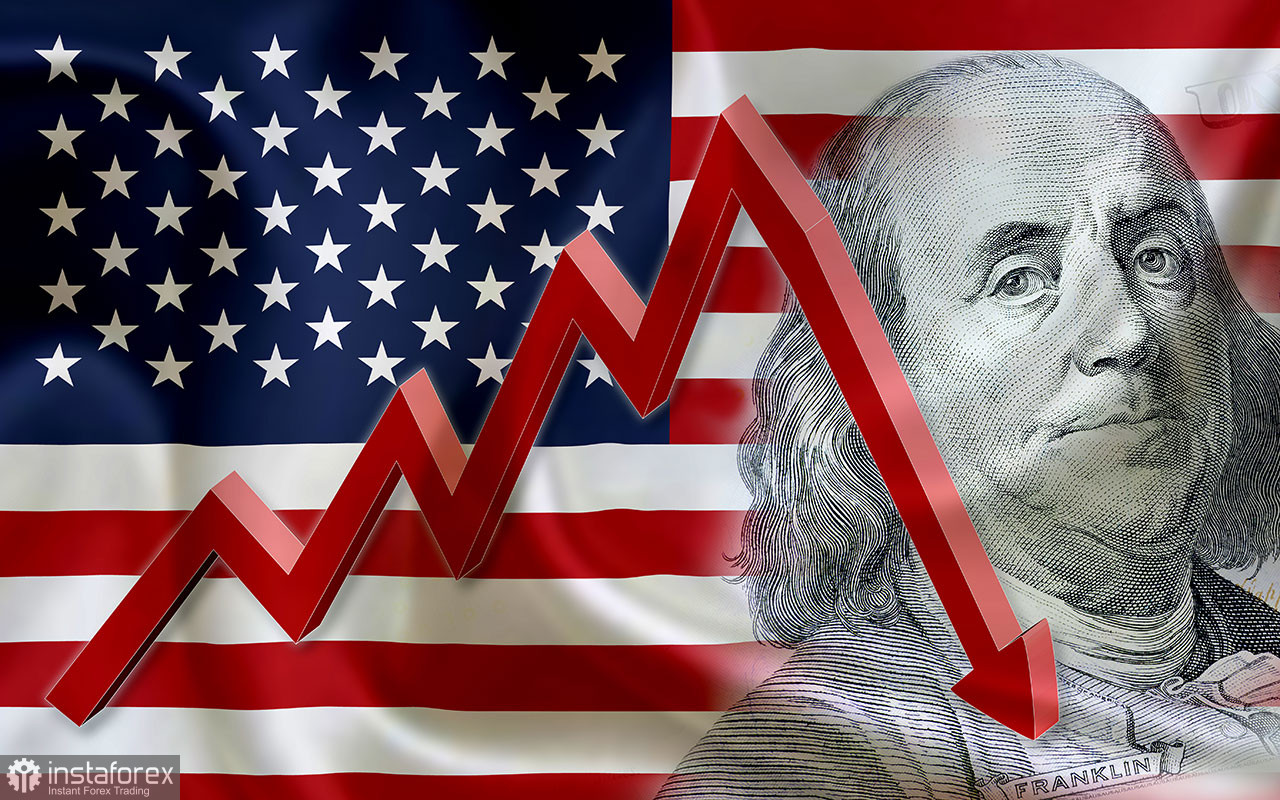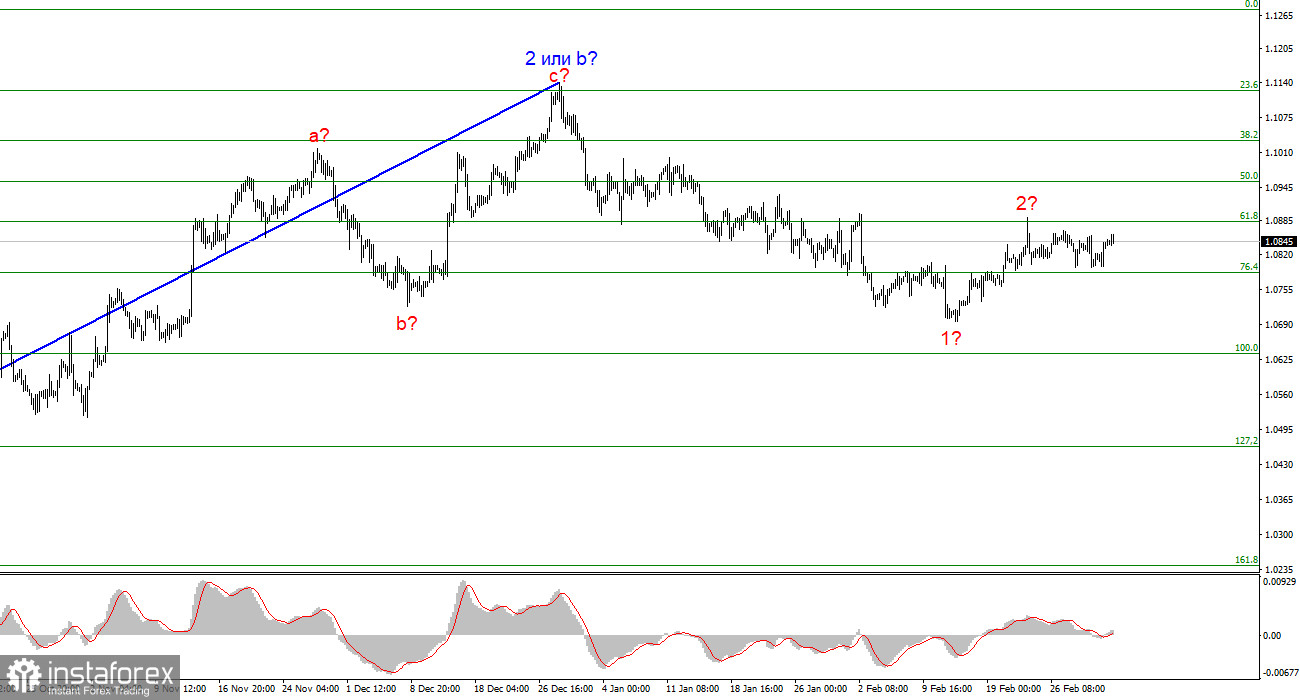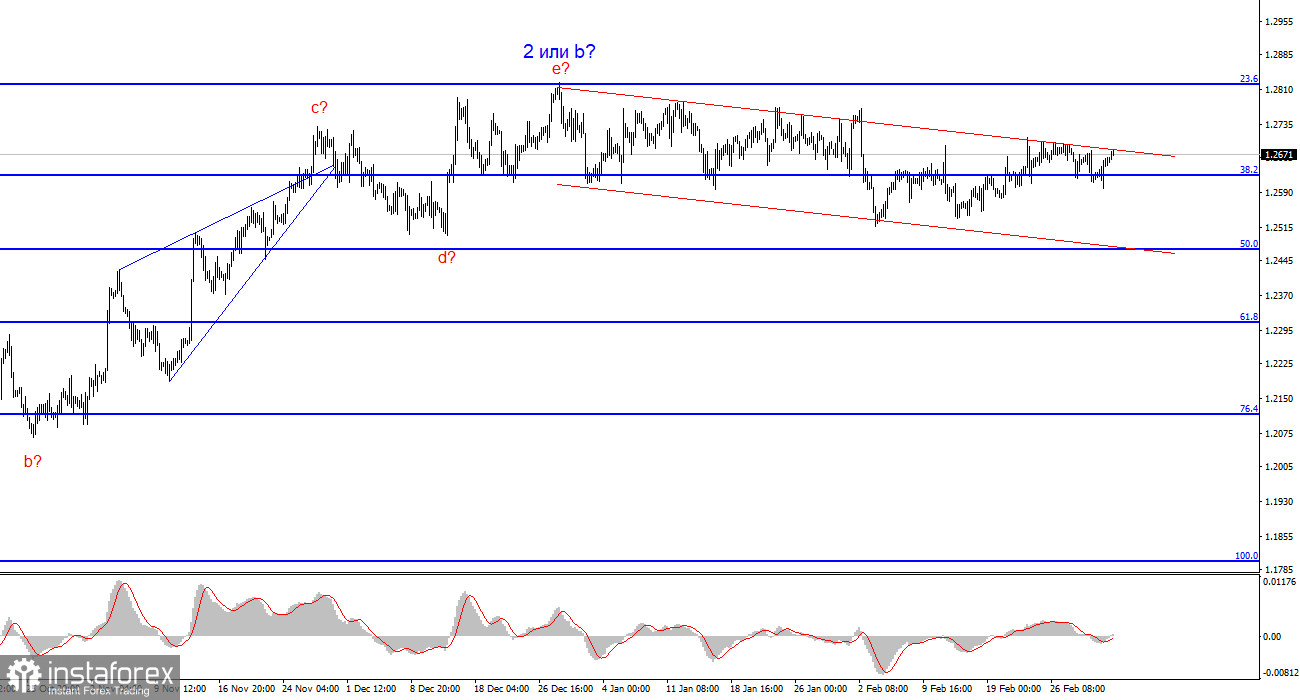
We have already established that the Federal Reserve is not in a rush to lower rates, which may provide support for the U.S. dollar throughout much of 2024. Loretta Mester pointed out that the central bank cannot rely on the pace of disinflation from 2023, and the labor market must significantly cool down for demand and economic growth to slow down further. Therefore, there is no guarantee that the Federal Open Market Committee (FOMC) will begin easing policy in June.
Let's turn our attention to the official CME FedWatch tool to understand the likelihood of a rate cut at each of the upcoming meetings. The odds are about 3% in March, 25% in May, and 52% in June. As we can see, even in June, there is only a 50% chance that the market will witness the first rate cut. Mester and some of her colleagues openly state that the market should forget about dreams of seeing more than three rate cuts in 2024. Nearly all of the FOMC members are convincing the market that there is no need to rush; the central bank will wait until they're confident that inflation is reliably moving to their 2% target. Fed Chairman Jerome Powell warned the market against overly high expectations a month ago and may do so again this week.

To complete the picture, Fed Bank of Richmond President Thomas Barkin said that inflation in the U.S. would continue to decline. However, if the reality is different, the Fed will have to intervene. By "intervention," Barkin may mean one thing: the rate will remain at its peak for even longer. Barkin suggests that inflation may not meet the Fed's forecasts. He acknowledges that the rate may have to be kept longer. The market, having learned from bitter experience, is already cautious about boldly predicting the timing of monetary easing. It's even hesitant to trade – both instruments have been moving horizontally for quite some time.
Barkin also said that he is not in a hurry to cut rates. He still sees inflation and wage pressure, and the latest inflation report was high. "We'll see if there are rate cuts this year, all depends on the progress on inflation," Barkin said. The Richmond Fed head fully admits that policy easing in 2024 may be nominal. Based on what I mentioned, I am warning you: do not expect too much from the Fed; there is absolutely no need for it to hurry.
Wave analysis for EUR/USD:
Based on the conducted analysis of EUR/USD, I conclude that a bearish wave set is being formed. Wave 2 or b is complete, so in the near future, I expect an impulsive downward wave 3 or c to form with a significant decline in the instrument. An internal corrective wave is currently being formed, which may already have a complete form. I am considering short positions with targets around the level of 1.0462, which corresponds to 127.2% according to Fibonacci.

Wave analysis for GBP/USD:
The wave pattern of the GBP/USD instrument suggests a decline. I am considering selling the instrument with targets below the 1.2039 level, because I believe that wave 3 or c will gain momentum sooner or later. A successful attempt to break through the 1.2627 level generated a sell signal, but at the moment, I can also identify a new sideways trend with the lower boundary at the 1.2500 level. In my opinion, this level currently acts as a limit for the pound's decline. I can also highlight a descending channel, which suggests a decline in quotes.





















